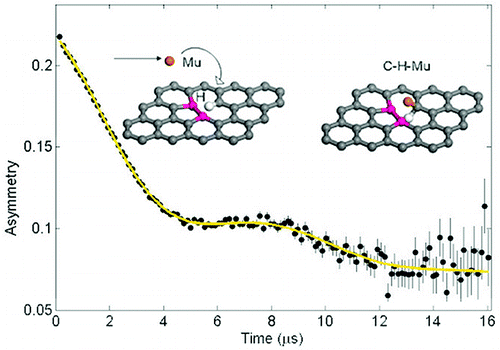We present the first muon spectroscopy investigation of graphene, focused on chemically produced, gram-scale samples, appropriate to the large muon penetration depth. We have observed an evident muon spin precession, usually the fingerprint of magnetic order, but here demonstrated to originate from muon–hydrogen nuclear dipolar interactions. This is attributed to the formation of CHMu (analogous to CH2) groups, stable up to 1250 K where the signal still persists. The relatively large signal amplitude demonstrates an extraordinary hydrogen capture cross section of CH units. These results also rule out the formation of ferromagnetic or antiferromagnetic order in chemically synthesized graphene samples.

Reproduced with permission. Copyright 2011, American Chemical Society
